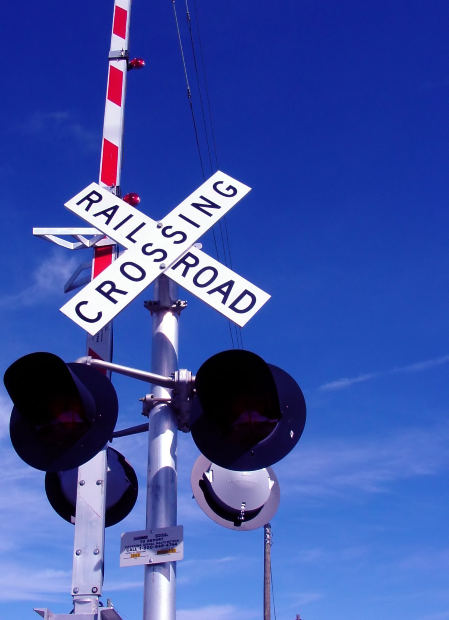
Train Travel – The Crossing at Bharatpur
Photo credit: dhester from morguefile.com
I have always loved this part of the journey. The Rajdhani Express overtaking the Paschim Express is so much a part of Indian Railway folklore that it has become an event on its own. I have been travelling on the Mumbai – Delhi route for a long time now. Watching the crossing at Bharatpur is just one of the highlights of this remarkable journey. This is a recollection of one of those episodes.
I was in the 3rd AC coach of the Rajdhani Express just behind the guard van and the engine. We were approaching the morning lights of Bharatpur. Winter had started to set in the North and in the morning fog I could see the hilly forests of Rajasthan give way to the mud huts of Bharatpur village. The fully air-conditioned super fast express was seven minutes out from the station and it was just crossing the outer cabin. In the distance I could see the double line of the Mumbai-Delhi route split up into the many tracks of Bharatpur Yard. The signals switched from green to yellow requesting the driver to slow down. The driver pressed the brakes gingerly slowing the speed of the train down from the breakneck 120km/h to a more leisurely 80km/h. The air conditioned rake of the Rajdhani Express began to cross the goods trains parked in the yard. Bharatpur yard was always crowded with goods traffic this time in the morning. Some rakes were headed north. Some were headed south. Some were diesel headed while others were managed by electric locomotives. There were Box Cars, Coal Wagons, Oil tankers and Container rakes. The Mumbai-Delhi route was one of the busiest routes for goods traffic and the heavy congestion in Bharatpur yard was proof of that.
From the opposite side, a coal train led by twin WAG5s from Tughlakabad shed crossed the Rajdhani Express. The crossing locomotives blared their horns loudly as they swept past each other. The WAG5s had 35 wagons behind them but they were still doing 90km/h. This was a high speed route and even the goods trains took the opportunity to travel at great speeds along this route. The speeding trains made a loud clattering noise as they crossed each other. As the guard van of the crossing coal train disappeared past my train, I could see the platforms of Bharatpur station in the distance.
The mud huts of the villages were now starting to give way to the brick and cement houses of Bharatpur City. The yard lines crisscrossed each other again to form the platform lines for Bharatpur station. A road passed by the side of the railway tracks, where I could see trucks, cars and ST buses racing with the speeding train. In recent years Bharatpur had developed a lot and I was surprised at the new flats and shopping complexes that had come up in the city. Even from the train, I could see that there was a look of prosperity to the place.
We were almost at the station now and on the curve, I could see the rear end of the Paschim Express waiting on Platform no.1. I had been plying the route for a long time now and it seemed that with every passing year the Paschim only got longer and longer. The day was not far when the rake would begin at Bandra and end in Amritsar. As the Rajdhani Express crossed the generator shed of Bharatpur station, the WAP5 engine of the Rajdhani Express blared loudly. There was always a curious crowd of rail fans present at Bharatpur station for this early morning scene. The Rajdhani Express switched tracks to platform no.3.
Digital cameras came out from pockets to shoot the overtake. The Rajdhani Express was still doing 80km/h as it entered the platform. The driver of the Rajdhani Express kept the horn blaring as the train speeded past the platform. We watched as coach after coach of the Paschim Express retreated behind us on Platform no.1. First the Kalka coaches, then the guard van, followed by the Amritsar coaches. Finally the single red Baroda WAP4 heading the Paschim Express came into view. I caught a glimpse of the Paschim driver waving the green flag giving us the go ahead. With that the Rajdhani cleared Bharatpur station and the show was over. The tracks merged once again to form the double line to Delhi. The flats of Bharatpur city gave way to the mud huts of the villages which in turn retreated behind the forests and hills of Rajasthan. The signals turned green giving the go ahead for our Rajdhani to increase the speed to the maximum permissible limit and head towards New Delhi.
__END__
